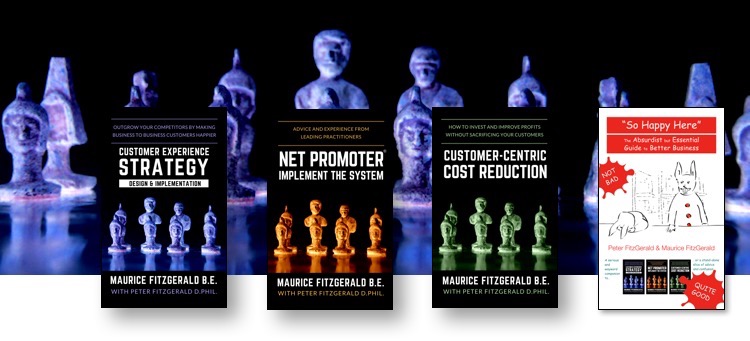#39 – Net Promoter for People, irritating surveys, customer culture, customer lifetime value
 Welcome to the 39th edition of my customer strategy newsletter. The five topics this week are:
New podcast on ‘Net Promoter for People’ Many companies, and I suppose all large companies, run annual employee surveys. The process usually runs something like this:
The result of all this is often improvement initiatves that employees do not recognize as relevant, announced so long after the survey itself that employees feel the company does not care. And that’s the ‘best case scenario’. Senior leaders are also known to say “Ah yes, there was that thing going at at the time of the survey that makes your proposal irrelevant. Let’s wait to see whether employees say the same thing next year.” The new Net Promoter for People is designed to address many of these concerns. It has been covered by Bain’s Darci Darnell in the latest Net Promoter System podcast. It adds an additional rating question the standard three-question NPS format. The new question is ‘To what extent do you agree with the following statement: I am inspired by my job.” The standard questions are the NPS ‘How likely are you to recommend [your company] as a place to workl?’, ‘Why?’ and ‘What could we do better?’ The Bain research shows that verbatim comments relating to recommendation are mainly about basic needs and things about which they are dissatisfied. The inspiration question produces verbatim responses that are about their higher-level need and suggestions for a positive future. I consider the podcast to be essential listening. You can find it here. Yet another irritating survey I have been in Los Angeles this week, attending the Bain Net Promoter Forum. I had to transit via Zurich, and got a pop-up survey request as soon as I logged into the Wifi in the Swiss lounge there. As I usually do, I tried to decide what I wanted to say before starting the survey. There were 34 questions in the survey, plus demographic questions. I could not really say what I wanted. It was clear that the survey is designed primarily to give scores to each of their own departments, rather than to find out what the customers want. I suppose I should write this one up in more detail. Why can’t companies just stick to a three-question NPS format or something similar? The Swiss people used the recommendation rating question, but did not follow it with ‘Why?’ and ‘What should we improve’ questions. I just can’t understand this sort of thing. Why would you need anything more? If people don’t make any comments or suggestions about the reception area, it just does not matter. Our latest blog posts Here are the latest posts. The most recent is the secondin a set of seven articles I am planning on the main customer experience measurement and improvement systems. Older posts are still available on the blog page.
Notable customer experience items from other sites Wownow: CX Framework Series #6 – Customer-centric culture Far be it from me to say that my way of thinking is the only one that matters. Rosaria Cirillo Louwman has designed an overall customer experience framework that includes six disciplines. This final blog in a series of six in the framework covers a set of interesting suggestions about how to establish a more customer-centric culture in your organization. Personally, I think culture is the hardest thing to change, because it requires so many soft skills and so much consistency. I think you will find it a useful read here. She has also recorded a TEDx talk that you can find on the Wownow site. CMO Australia: Why so many organisations keep getting NPS wrong Excellent article in which Brian Andrews of Medallia talks about his extensive experience leading NPS implementation over a long period. He led the first major NPS implementation, which was at Intuit in 2003, and is now ‘Senior CX Principal’ at Medallia. The points I like best in the article are about tying the NPS results to revenue. Customer Lifetime Value is the terminology I use for this. As Brian points out, it is useless to develop a model for this in isolation. Your CFO or her delegate must design the model with you. Once your company has an agreed model for how much one point of client retention is worth over time, it becomes far easier to decide on investments necessary to drive that improvement. You can find the article here. Looking forward We have had our first sales of the new book of Peter’s drawings, so thank you for that. As always, Amazon reviews are the way you can help us most, so please do that, no matter what you think of our books. Please share this newsletter with your friends and colleagues and encourage them to sign up for it here. I have put links to past newsletters on the subscription page. Finally, please feel free to change or cancel your subscription using the link below. You can also email me, Maurice FitzGerald, at mfg@customerstrategy.net. To change your subscription, click here.
|





